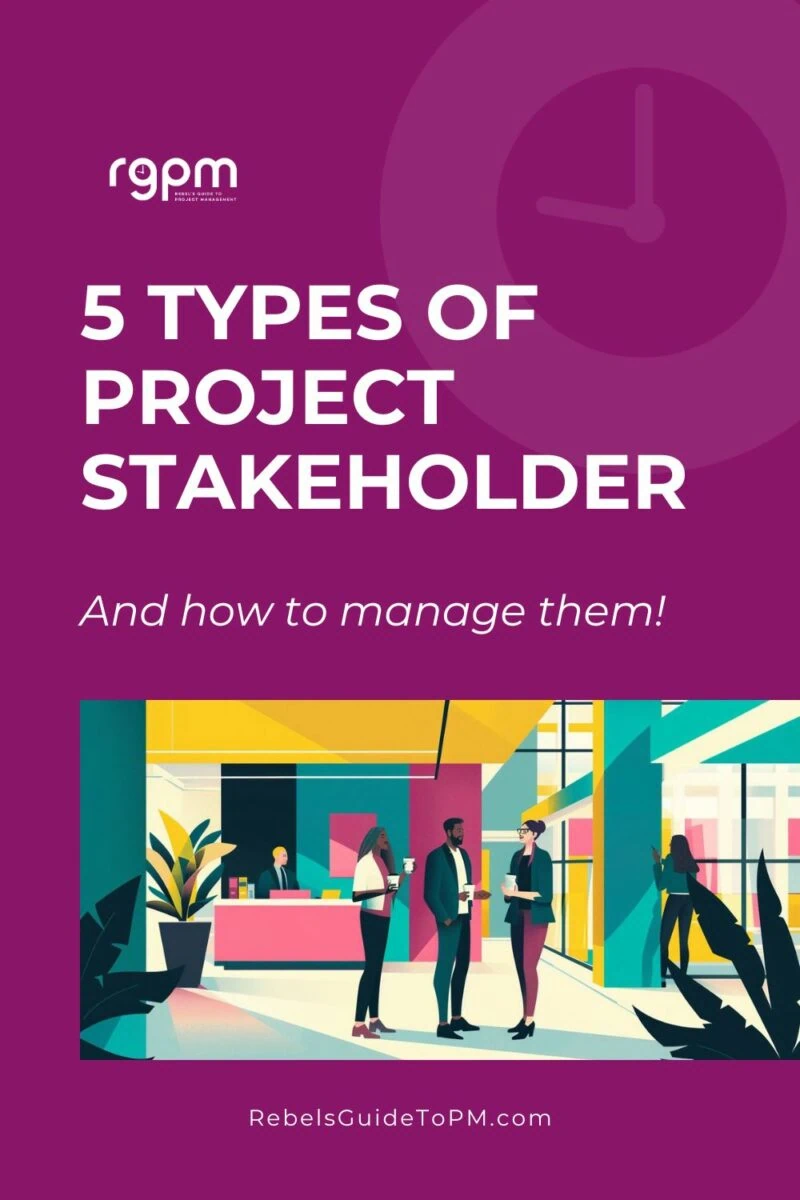5 Types of project stakeholder (and how to manage them)
Managing project stakeholders can feel like herding cats—each one has their quirks, demands, and personalities. If you’ve been in the project management game for any length of time, you know how important it is to understand who you’re dealing with and how to keep things running smoothly.
From the ever-elusive busy bee to the relentless micro-manager, I’ve worked with them all!
Here are 5 types of project customer that you may come across, along with some tips about how to manage your relationships with them like a pro.
1. The stakeholder who won’t commit
The stakeholder who won’t commit frequently comes up with new requirements and submits changes. They might even use the official scope management process, but more often than not they’ll expect that because they have mentioned it in an email or while you were both at the office coffee machine, that’s enough.
Trust me, it’s never enough.
Record and analyze all the changes that they propose and help them see the impact of changing their mind so often.
They might still want all their changes to go ahead, but at least you’ll have a clear idea of how it is going to impact the schedule and budget and – most importantly – have those impacts approved so you aren’t trying to deliver more with the same money within the same time.

2. The stakeholder who is too busy
The busy bee stakeholder doesn’t reply to your emails. They don’t return your calls (or if they do, it’s at a time when they know that you aren’t going to be available to take the call and they leave the briefest of messages).
They accept your meeting invites and then decline the night before.
They are busy. I get it. I’m busy too.
But for projects that are important to me, and for work that pays the bills, I make the time. And I can’t help feeling that they should too.
After all, why should my team and I be slogging away delivering something when the person who is ultimately going to benefit can’t find a moment to prioritise answering a query or making a decision?
When you can’t get hold of a customer it slows your project down. Without their input or sign off at critical times you can’t move forward. You shouldn’t expect your team to act in the absence of critical decisions – so whole workstreams might come to a halt.
Leave messages for your customer to explain that. Make it easy for them to get back to you and let them know the impact of any delay. Review different ways to engage stakeholders and how you can switch up what you’re doing to better support them.
If necessary, ask your project sponsor to get involved, assuming that the person causing the problem is not your sponsor.
Proactively manage these stakeholders (here are some tips on how to do just that). Ultimately, if they can’t give the project the time it requires, they should be nominating someone else to be the main point of contact for that team.
3. The stakeholder who micro-manages
Micro-managing is another way to really slow down a project. It’s when you have to run every decision past your customer.
They are the kind of stakeholder who wants to come to every project meeting, and because they have diary commitments like everyone else, you can’t meet as quickly as you would like.
I’ve even met stakeholders who insist on reviewing the technical spec even if they have no idea of what they are actually reading (I’m pretty sure that he wasn’t an IT developer in a previous job).
You’ll have to use your negotiation skills to make sure that you set boundaries you can both work to. explain that there are certain things that you can get on with without needing their involvement.
Talk about the kind of things where their input really does add value and be honest about how much their involvement in other areas is slowing you down. Make sure that they get project reports that are detailed enough for their needs.
You may still have to live with them micro-managing, and if they are paying you there isn’t a lot more you can do about it, but you should adjust your project schedule accordingly.
Read next: The 6 things every stakeholder wants
4. The stakeholder who doesn’t know what s/he wants
The flip flop stakeholder changes their mind frequently but not with clear requests: it’s all very woolly. This problem is most acute at the beginning of the project when you are trying to get started and are finding it almost impossible to pin down what you should do.
You may have clear objectives and a project vision, which is great, but the difficulty comes in trying to work out how to get there.
You need the help of a business analyst – someone who is an expert at eliciting business requirements. You should also plan enough time in the project initiation and planning phases to really work out exactly what is required, and if you can, build in some cost contingency because you’ll have scoped something incorrectly.
When your customer can’t tell you what he or she wants, you aren’t going to be able to deliver that outcome. They need to know this, and what they are risking by being so vague.

5. The stakeholder who wants it faster
Most project stakeholders want it faster. And why wouldn’t they? If you can deliver faster you’ll normally unlock the business benefits more quickly and get those savings/extra sales/lower staff turnover or whatever faster.
But it becomes a problem when the customer doesn’t understand just how long things take, or refuses to believe you.
For example, they ask you to cut the time for testing, when your estimating over the last 6 projects like this one show that you really do need the full month.
Be clear. Let them see the workings of the project. Help them understand where your estimates have come from. This is a situation that you can turn around, and if you have good stakeholder relationships you should be able to do so relatively easily with a few honest discussions.
And be honest yourself too: how much padding is in those estimates? There might be a compromise to be had that involves making your contingency time and schedule buffers transparent and then moving dates up as you don’t use them.
Working with different personalities is part of the job
Project stakeholders generally are committed to the project and want to see it be a success. That’s why stakeholders contribute: because they want the deliverables that are due at the end.
But from time to time in your career as a project manager you’ll come across stakeholders who aren’t as easy to work with.
Great stakeholder communication skills, time and patience are a good start in making sure those customers understand the project and everything that you are trying to do. Talking to them about the nature of project work can be a good way to open lines of communication.
While it might take longer than you had hoped, the results will be better and you’ll build great ongoing relationships with your stakeholder community.
